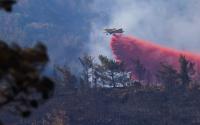2 March 2008
The looting of Iraq's cultural treasures made headlines around the world in the wake of the invasion by the US and its allies in March 2003. Now the extent of the harm to archaeological sites in southern Iraq has been quantified, thanks to commercial satellite images.
Modern-day Iraq contains relics from some of the world's oldest cities and is often referred to as the "cradle of civilisation". Anecdotal reports and helicopter flyovers suggested the looting of artifacts has been widespread.
To find the extent of the problem, archaeologist Elizabeth Stone at Stony Brook University in New York examined images from Digital Globe Corporation, a private satellite imaging company. The looming conflict sparked DGC's interest in Iraq and from February 2003 it took many high-resolution images of the country.
Stone examined almost 10,000 square kilometres of imagery, containing some 1900 archaeological sites. By scrutinising the darkness and sharpness of shadows, she was able to identify holes made by looters and whether they were pre-existing or new. In this way she was able to assess the severity of looting before and after the war.
She says 15.75 square kilometres of land have been intensively looted, including 213 archaeological sites. This is an area many times greater than all the archeological excavations undertaken in southern Iraq (Antiquity, vol 82, p 125). Stone estimates that hundreds of thousands of tablets, coins, cylinder seals, statues, terracottas, bronzes and other objects have been stolen.
http://www.newscientist.com/article/mg19726453.200-iraqs-legacy-of-looted-treasures-is-revealed.html






